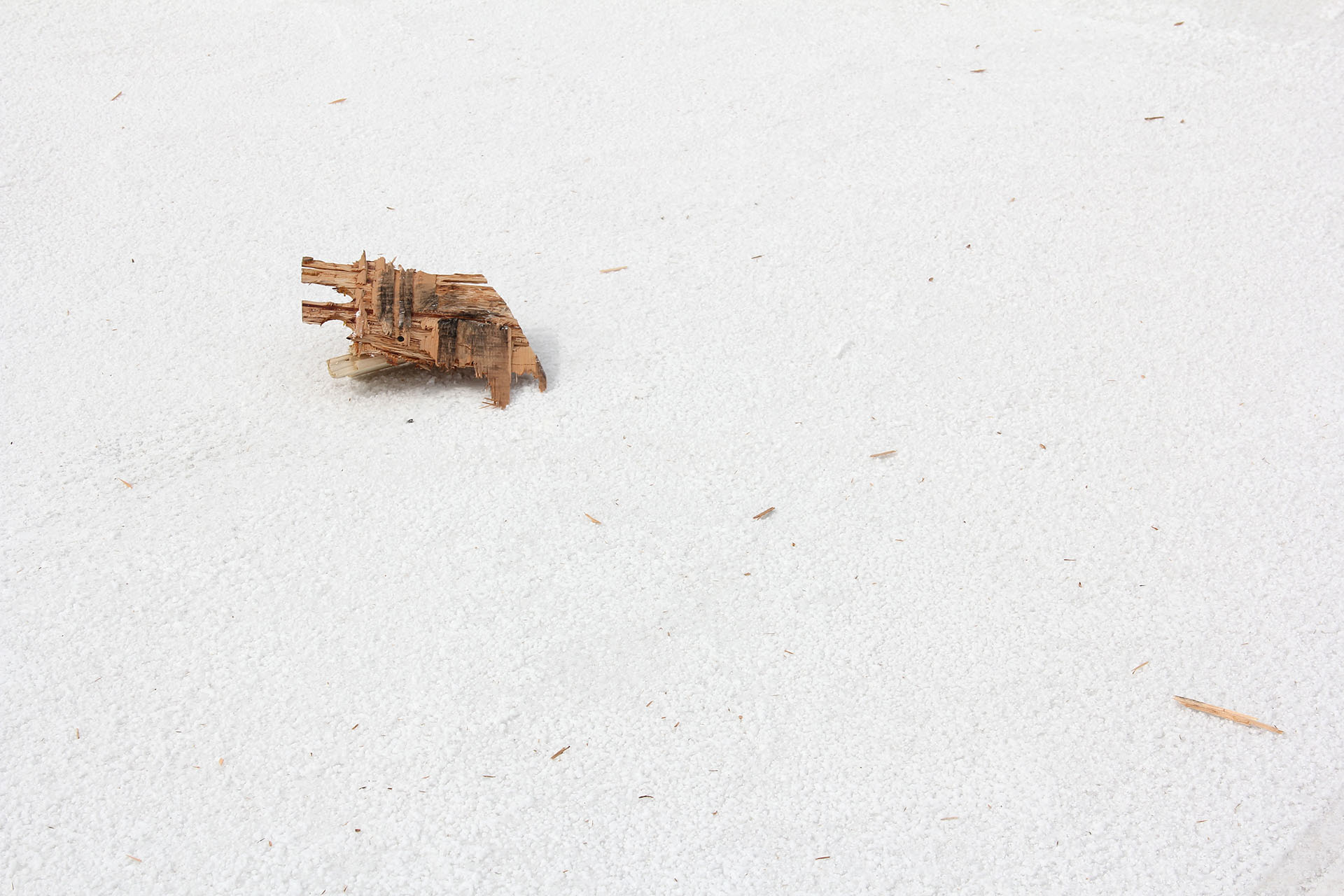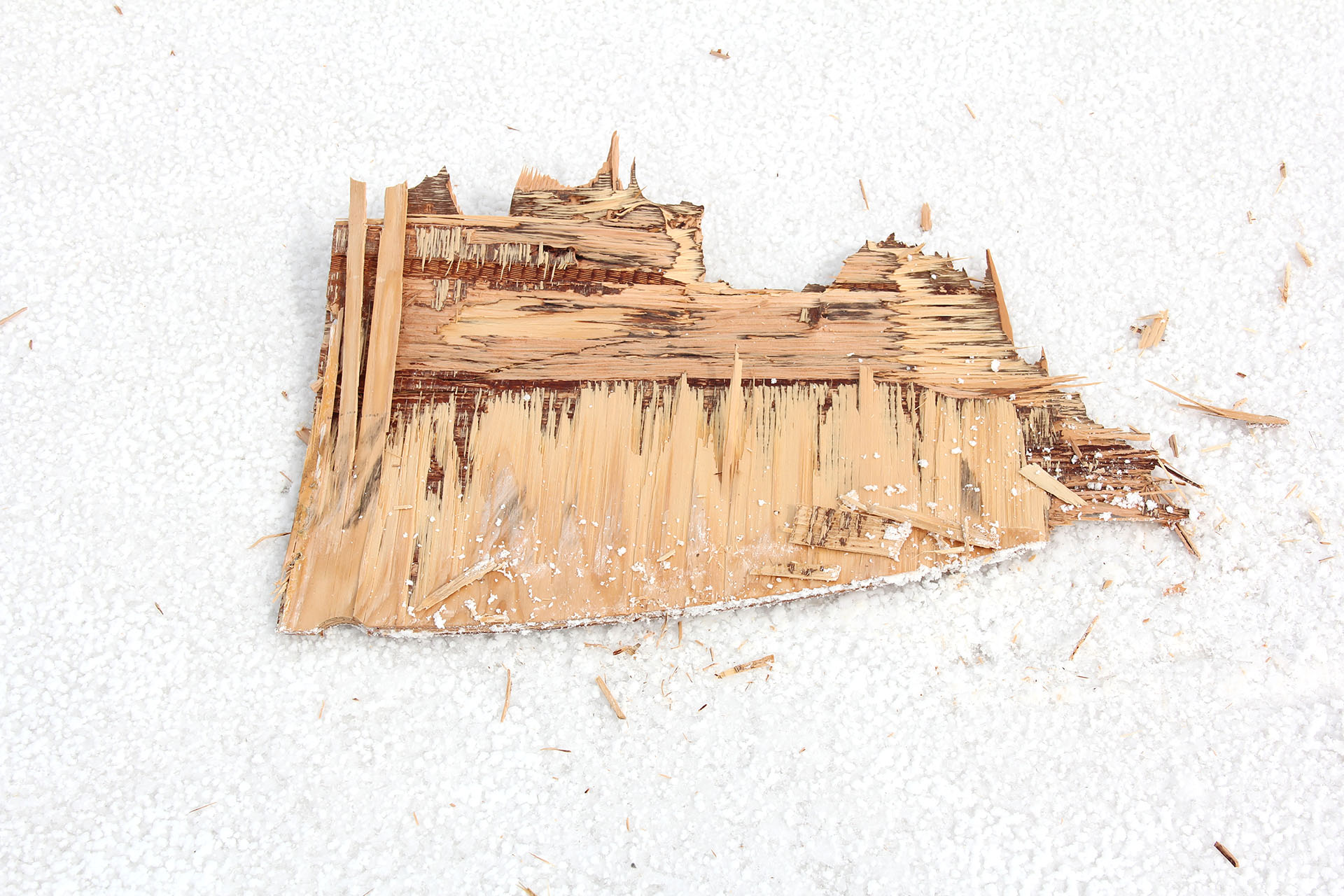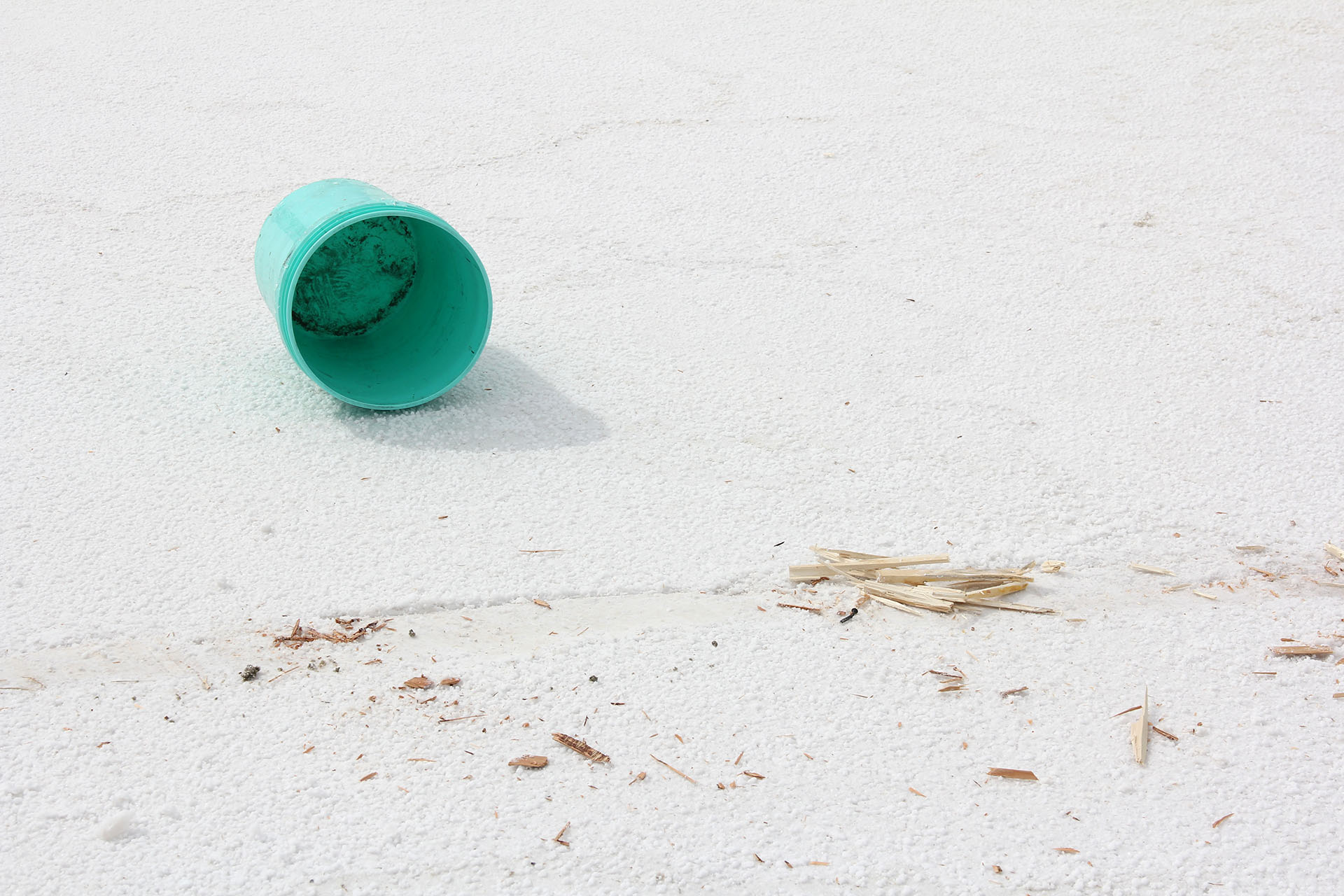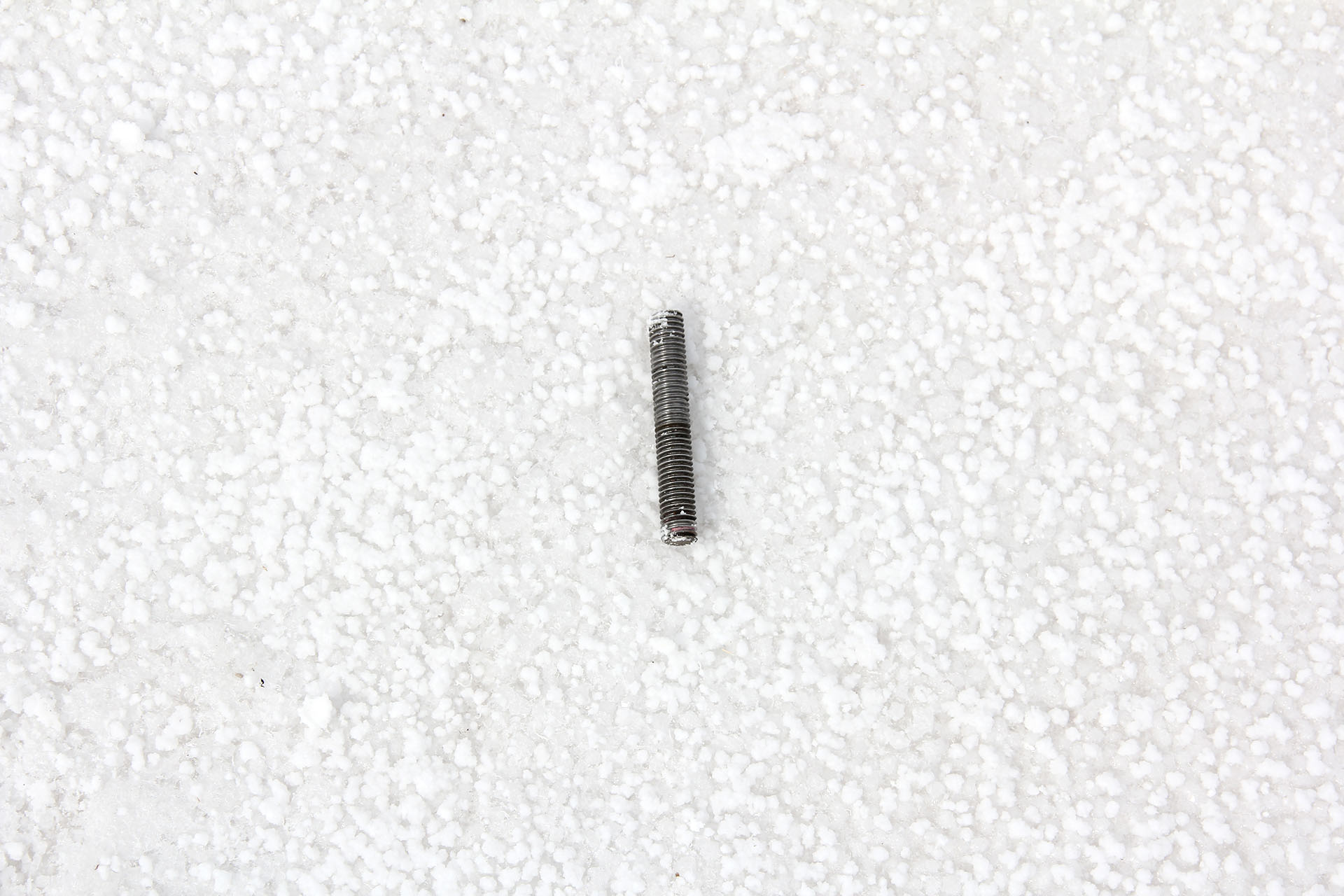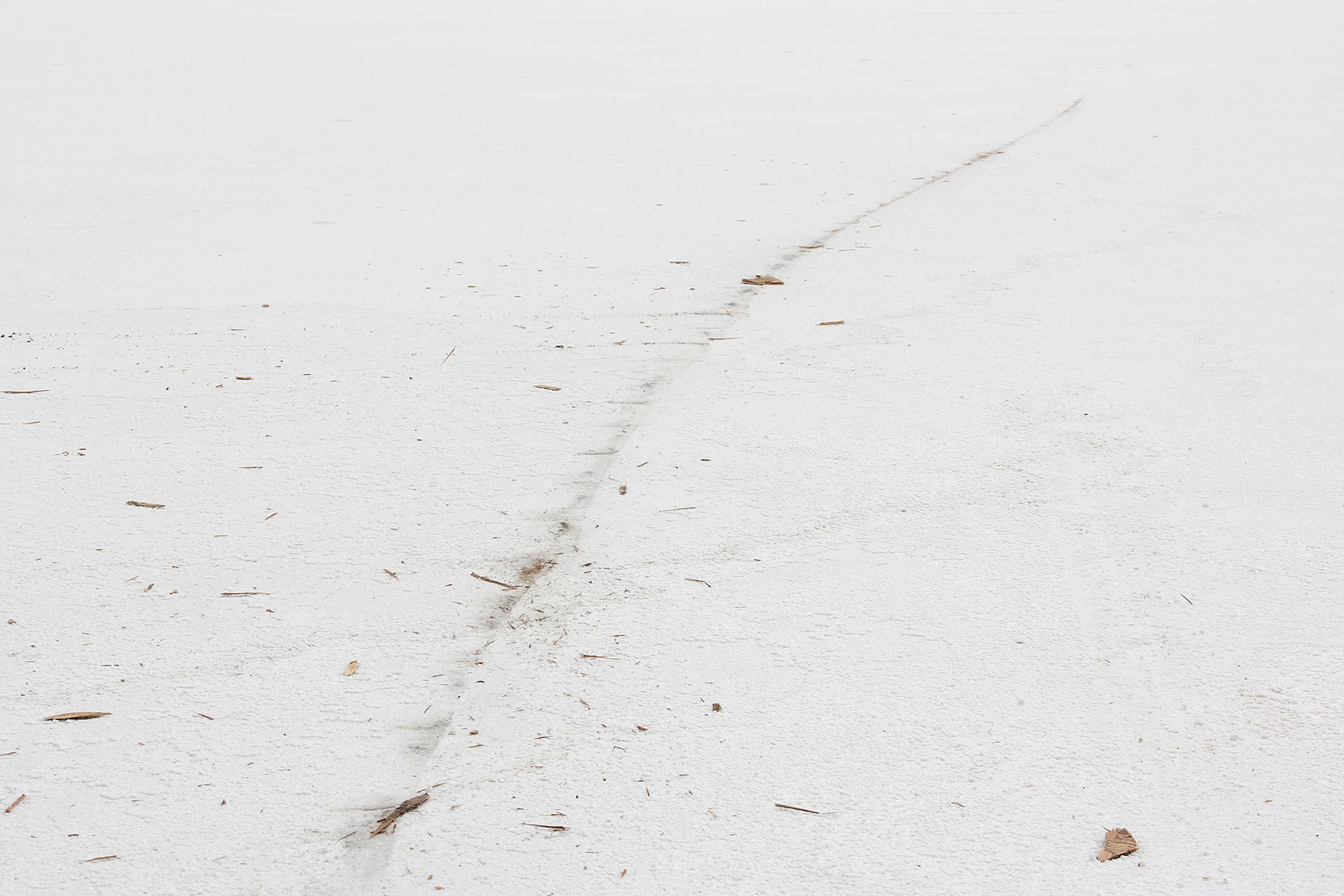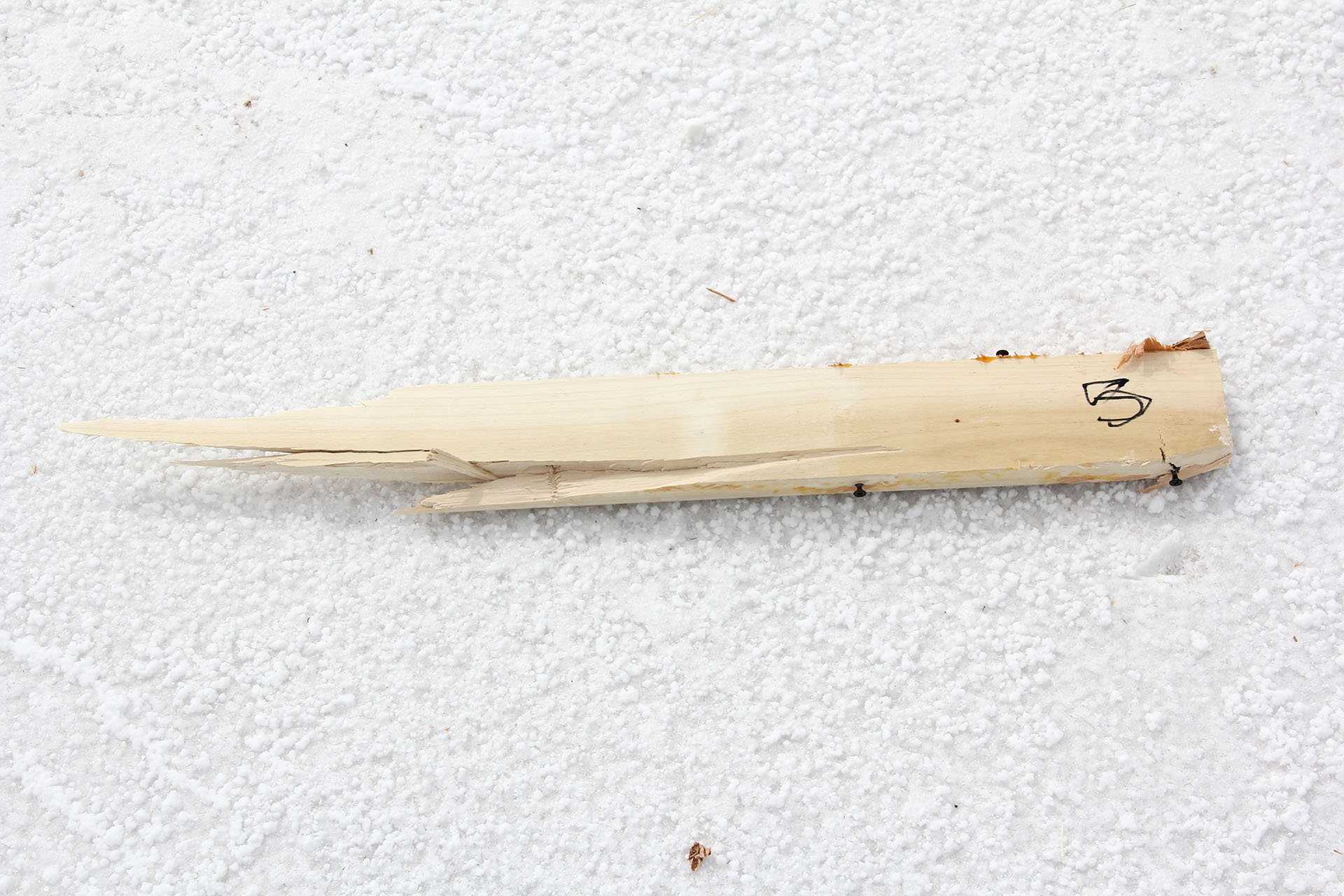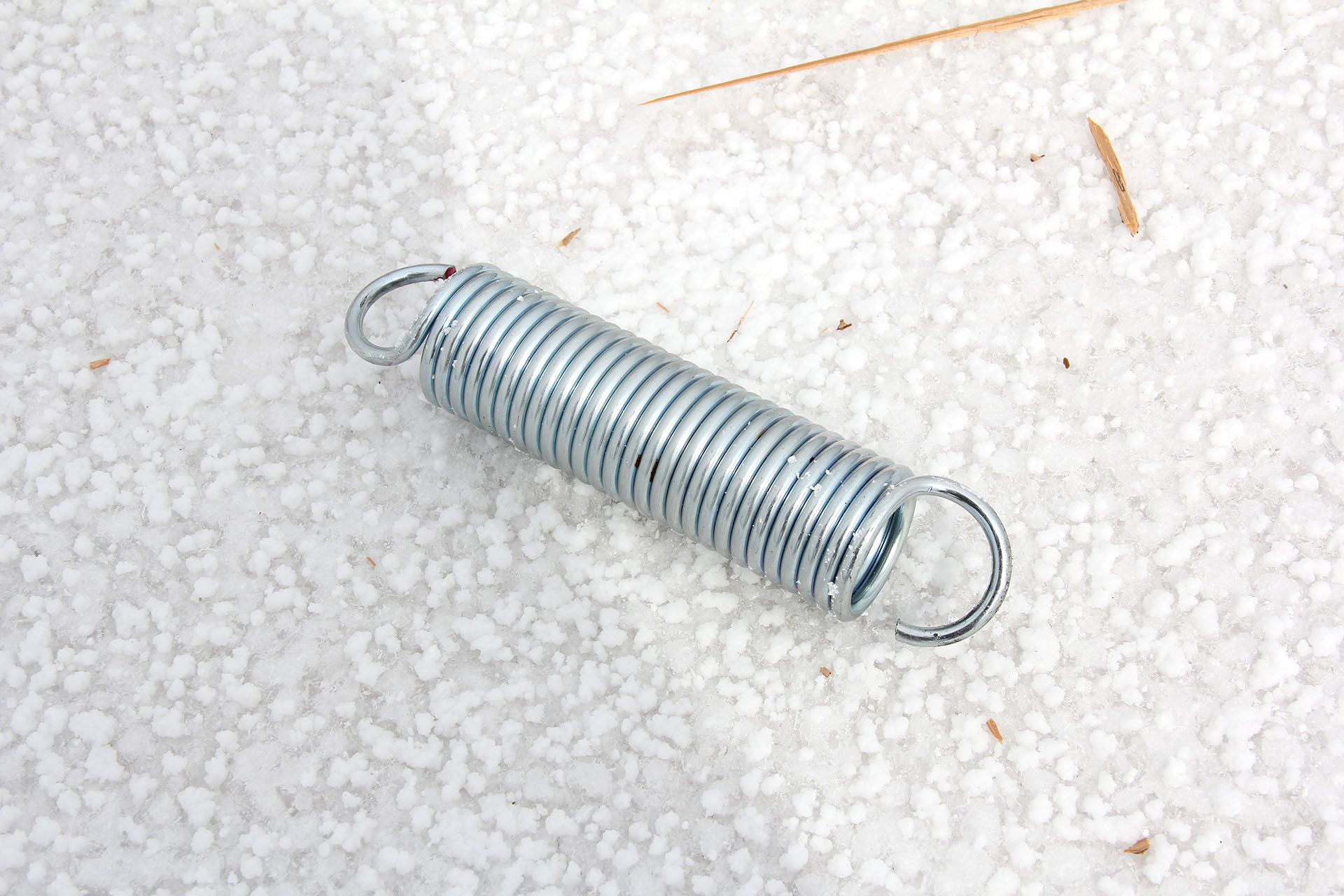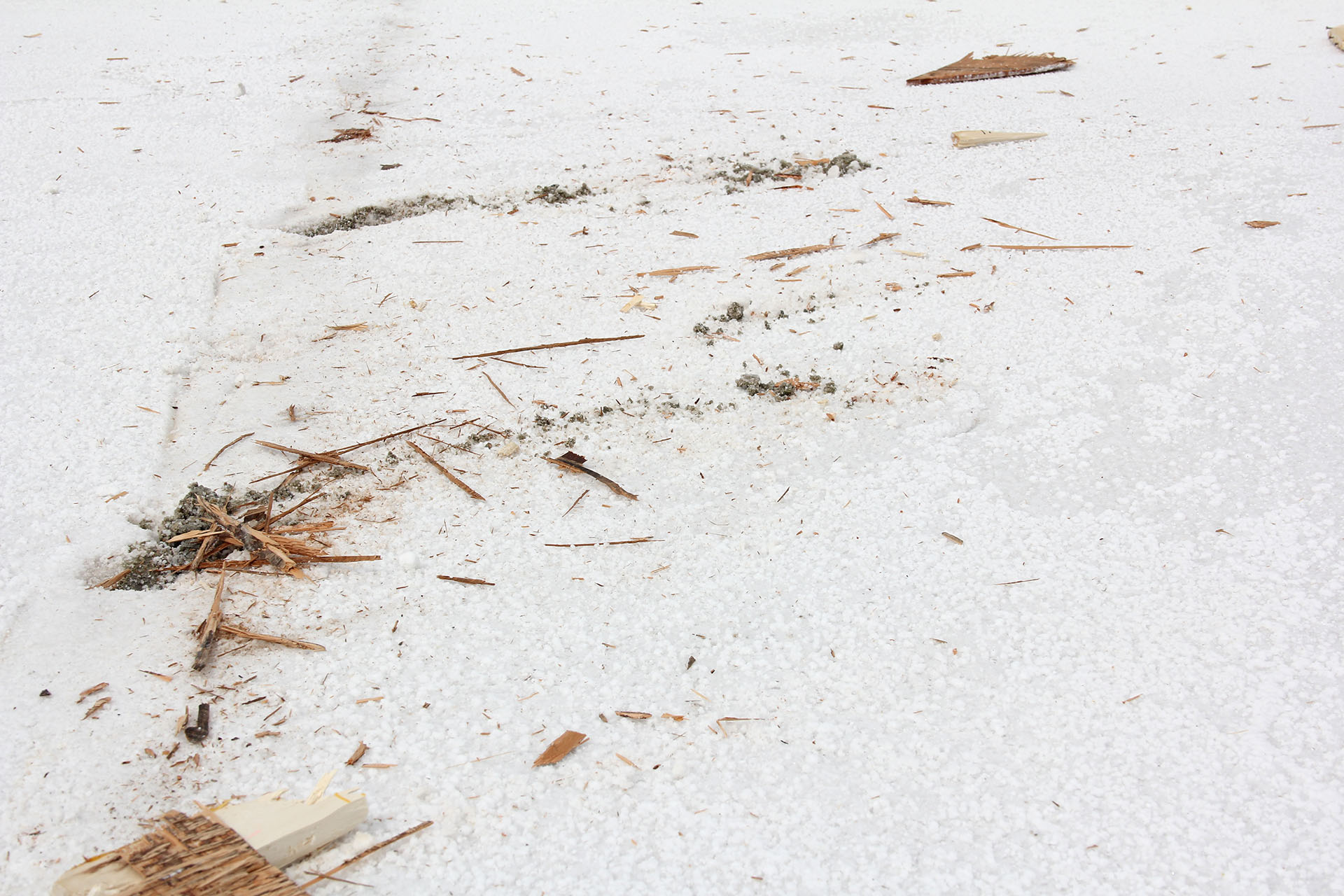A 12-foot diameter plywood and poplar disc rolls alongside a truck, connected by a wooden axle. A 5-gallon bucket hangs from the back of the vehicle, slowly dripping distilled water. The disc and bucket are coupled to one another by a length of ⅛" spectra line. At the point of failure, the two seemingly-independent operators collapse in unison. More information on spin-entangled states is available
here.
Videos are available
here.
The Bonneville salt flats are located in northern Utah and have a rich history of land-speed record tests and other automobilic experiments. In 1970, the current speed record of 622.4 mph (!) was set by a rocket-powered (!) vehicle.
The salt flat is composed of three distinct strata, a result of differing crystallinity among the compounds that formed as the prehistoric lake evaporated. The lowest layer is composed primarily of calcium carbonate (CaCO
3) and dolomite (CaMg(CO
3)). The middle layer is distinguished by anhydrous and gypsum forms of calcium sulfate. The composition of this stratum averages to CaSO
4•½H
2O. The surface layer is mostly composed of halite (NaCl). Trace amounts of strontium (Sr), potassium (K), iron (Fe) (!), and manganese (Mn) are present (in descending order) in all layers of the basin.
